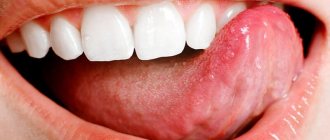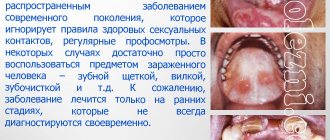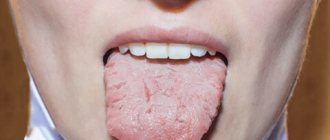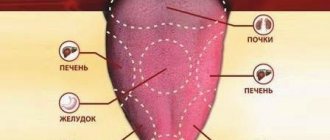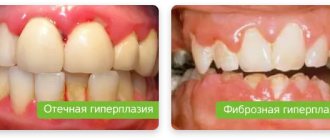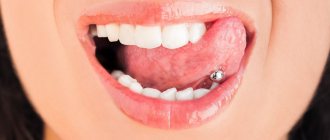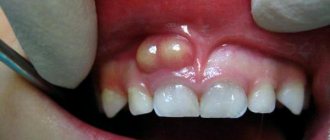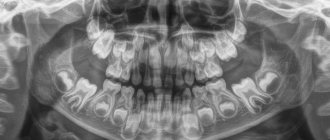Incredible facts
The human tongue is a muscular organ covered with a mucous membrane. This small organ performs many functions: it is an organ of taste and performs a tactile function, helps process food, and is involved in the process of swallowing.
Language influences the correct reproduction of sounds and determines the timbre of the voice. Without language, human speech is impossible. In infants, the tongue is responsible for the process of sucking milk. So what else do we not know about our language?
Top 10 people with the longest tongue in the world
- Stephen Taylor is a giant human tongue.
- Nick Stoberl is more than anyone in the world.
- Annika Irmler is the longest female tongue.
- Nick Afanasyev - success thanks to language.
- Chanel Tapper is the most unique girl.
- Adrianna Lewis is funny and quirky.
- Byron Schlenker has the biggest tongue.
- Emily Schlenker is a young world record holder.
- Yagya Katuwal is a very original person.
- Radmila Yusupova is a smiling girl.
Language functions
- Taste . Taste buds, the sensory taste receptors, are located on the tongue.
- Speech . Tongue movements are critical to articulation.
- Chewing and swallowing . The tongue helps the teeth and other parts of the mouth chew food and pass it through the pharynx as the first part of the swallowing process.
- Cleaning . The movements of the tongue dislodge food particles stuck between the teeth, gums and cheek so that they can be spat out or swallowed.
Stephen Taylor - owner of the world's largest tongue
The most amazing thing is not only the fact that man has the longest and largest tongue in the world, but also that it continues to grow. Taylor works as a regular school teacher. In 2009, Stephen was included in the Guinness Book of Records, since then his organ has grown by 0.5 cm. Thanks to this feature, the man is very popular in his homeland in England and all over the world. Taylor was repeatedly invited to television, and print publications wrote about him. The man is not at all ashamed of his uniqueness, he even demonstrates it in every possible way. Stephen has had a big tongue since childhood; even at school he entertained his classmates with various tricks. Experts in the field of science and medicine cannot explain why the longest, largest tongue in the world continues to grow. The record holder himself jokes about this that he is growing because of constant demonstrations to others.
Stephen Taylor - huge tongue
Even member of the legendary group Kiss, Gene Simmons, wanted to look at such a unique person, and was delighted with such a rarity. Stephen can easily reach his nose with the tip; the total length of the longest organ is 9.8 cm. The man’s mother urges her son not to show his pride again.
Language: its structure with photos
The description of what the tongue consists of includes the following information. The human tongue does not contain bones and consists of muscle tissue, which is covered with a mucous membrane. It makes movements using striated muscles. In this case, in order to fix the position of the tongue, protrude it and return it to the oral cavity, skeletal muscles are used (see also: what functions do the muscles of the floor of the mouth perform?). Raising, thickening and shortening of the organ becomes possible thanks to its own muscles.
From an anatomical point of view, the circuitry of the nervous apparatus is finely structured. The innervation scheme involves 5 out of 12 cranial nerves. The structure of the tongue can be seen in the photo accompanying the article. There are several main parts of the tongue (the photograph shows where they are located) - the root, the body, the groove and the frenulum. The parts of the language are:
READ ALSO: cut tongue in a person: symptoms with photos and treatment
- The body is part of the tongue, which consists of muscles characterized by mobility and rounded ends, the anterior 2/3, a vertical line divides the body in the middle.
- The root accounts for 1/3 of the length and has minimal mobility.
- The bridle is located below. Needed to connect the lower fascia with the floor of the mouth.
- Furrow - if you look at the diagram of the tongue, you can see a kind of demarcation between the body and the root (we recommend reading: what to do if grooves form on the tongue?).
The dorsum of the tongue is its upper surface. The lower part of the tongue is called the fascia. It is indicated on the tongue diagram. The submucosal layer is absent. For this reason, the organ does not form folds. If you examine its structure under a microscope, you can see that the body is covered with papillae, which are divided into 4 types.
Nick Stoberl - record holder of the list
The guy broke the record of the previous participant in 2015; the length of his organ is 10.08 cm. The record holder lives in the USA, works as a comedian and artist. He says that after the official recognition in 2015, all friends, when meeting new people, always add that Nick has the longest tongue in the world. Of course, new acquaintances ask to demonstrate such a rarity.
Nick Stoberl - a big tongue by inheritance
The guy admits that it’s very cool to have such a big tongue, you can easily reach the tip of your nose and amuse your friends. His father also had this phenomenon, so we can say that the rare phenomenon was inherited by Stoberl. According to the young man, it was not easy to officially register his figure; the desire to stand out coincided with the 60th edition of the Guinness Book of Records. Before publication, the record holders were checked very carefully, Nick took measurements several times and finally got into the Book, which he is very proud of.
Causes of plaque on the tongue
— Modern medicine names the most likely cause of plaque on the tongue as problems with the gastrointestinal tract, or inflammation of the organ itself. The mucous surface of the tongue consists of a considerable number of papillae with taste buds, which for various reasons can become inflamed. — A white tongue, often enlarged and swollen, is often found in people suffering from chronic gastritis with high acidity, colitis, chronic enteritis and frequent constipation. - Plaque on the tongue can also indicate that the patient has a stomach or duodenal ulcer. - Plaque on the tongue may well appear after a heavy meal - even if the person is relatively healthy. In addition, the appearance of plaque in the morning and its disappearance during the day are within normal limits. But if plaque is constantly present on the organ, this is a serious reason to visit a doctor.
In general, even in ancient times, people were able to obtain information about the patient’s health status by examining the surface of his tongue. And today, using knowledge of this kind, you can easily determine the first symptoms of various diseases. For example, you can try to see information about the condition of the heart and liver in the front part of the organ, its middle part shows the condition of the gastrointestinal tract, and by the root of the tongue you can determine the condition of the lower intestine. The sides of the tongue, in turn, show the condition of a person’s kidneys. Thus, with some knowledge, you can always try to identify the problem in its early stages of development.
Annika Irmler - a girl with a very long tongue
In 2001, she managed to become a record holder, demonstrating her long organ, 7 centimeters long. During the measurement, you had to stick your tongue out of your mouth as much as possible. A 12-year-old girl succeeded. On average, the length of the organ protruding from the mouth is 5 cm. The teenager is very popular among her friends due to this unusualness.
Annika Irmler - very long tongue
The girl admits that after the official announcement of the achievement at school, she had to stick her tongue out at almost every child; everyone was interested to make sure. Friends have told Annika more than once that her tongue is the biggest and someday she will become famous because of it. Irmler is glad that she found herself among unique people.
Diseases that can be diagnosed by changes in tongue color
Not only the appearance of plaque, but also a change in the color of the tongue can tell a lot about the condition of the body as a whole. As mentioned earlier, a whitish coating in the middle part of the tongue will indicate diseases such as stomach ulcers, gastritis and duodenal ulcers.
The tongue will become dry due to dehydration, which can be caused by an intestinal infection, diarrhea or acute abdomen - peritonitis, appendicitis, internal bleeding, etc. Dryness of the tongue may well be combined with a bitter taste in the morning - this is quite likely due to disruption of bile secretion processes. In addition, a feeling of dryness of the tongue can signal both a disturbance in sugar metabolism and problems with the thyroid gland.
White plaques may often appear on the tongue, which can be easily removed if desired. This is a clear sign of dysbacteriosis, stomatitis or thrush. The cause of these diseases may well be improper treatment with antibiotics. But white or grayish-yellow ulcers, quite painful for a person, can occur due to injuries to the tongue or increased acidity of gastric juice.
Thus, it makes sense to look at your tongue from time to time - after all, its condition may well signal some problems in the body. And as doctors assure, a timely diagnosed disease is a serious step towards a healthy body.
Nick Afanasiev - young actor
Until the guy proved that his organ is the longest, no one had heard of him. Nick is Russian by nationality; as a child, his parents moved from Moscow to the USA. In the states, Afanasyev became famous for his originality. The length of the organ is 8.9 cm, the guy dreamed of becoming famous, becoming a famous actor, he believed that he could succeed, because he was not like everyone else. The young man easily reaches his elbow and nose.
Nick Afanasyev - a man with a long tongue
Once he posted a video on the Internet dedicated to his originality; the views in a short time simply went off scale - more than a million! The man was surprised by such popularity; he did not expect such success. But it was thanks to this that the guy began to fulfill his long-time dream of becoming an actor. He was invited to star in the TV series for teenagers iCarly; today Nick has more than a dozen films in his career.
Muscles of the tongue
The bulk of the tongue consists of muscles. The bundles of muscle fibers are located in three mutually perpendicular directions: longitudinal, transverse and vertical (Fig. 4). There are two groups of muscles of the tongue: internal, or intrinsic, muscles of the tongue, which change its shape, and external, which change the position of the tongue during contraction. Depending on their function, the muscles of the tongue are grouped as follows: muscles that lengthen and flatten the tongue; muscles that shorten the tongue and move it upward; muscles that shorten the tongue and move it downwards, and with unilateral contraction - to the side. The fiber bundles of all these muscles form a complex interweaving, which explains the exceptional mobility of the tongue and the variability of its shape, which is especially important for articulation.
In humans, the genioglossus muscle reaches the greatest development compared to animals. It flattens the tongue and pushes it forward, and with unilateral contraction it deflects the tongue to the side. The tone of this particular muscle prevents the tongue from falling back and closing the airways (for example, during deep sleep).
Chanel Tapper - Women's Champion
The record holder from the Guinness Book of Records comes from the USA. Its organ reaches 9.75 centimeters in length from the tip of the tongue to the upper lip. Chanel first discovered her originality at the age of 8, during a Halloween photo shoot with her mother. In one photo, both showed their tongues and made funny faces. During a detailed examination of the photograph, Chanel clearly saw that her organ was twice as long as her mother’s. Then Tapper's classmates began to notice this, and she even became popular at school for demonstrating a trick during which she reaches her nose.
Chanel Tapper - world record holder for longest tongue
The girl admits that today requests to reach her elbow or nose are familiar to her, she has long gotten used to popularity, but she never ceases to show the uniqueness of the organ. The student did not immediately decide to submit an application to the Guinness Book of Records. She wondered if she needed to be so popular, to show off her tongue to the whole world. After thinking carefully, I finally decided that I would really like to become famous. Measurements were taken, after which the girl was officially recognized as the owner of the world's largest, longest tongue among a female representative. If you stick it out to its full length, the organ appears even below the chin. The student understands that maybe her achievement does not seem very pleasant or understandable to someone, but she herself has no problems with it. After all, the girl was born this way, so she is not shy about this uniqueness.
What does this organ look like in a healthy person?
The normal color of the tongue is light pink. There is a fold running across its entire surface. A healthy organ has moderate moisture and normal sensitivity. The shape of the tongue is distinguished by smooth outlines and the absence of curvature. Fungiform papillae are clearly visible on the back of the tongue (we recommend reading: enlarged papillae on the tongue: causes, symptoms and treatment).
It should feel soft to the touch. Normally, the formation of a whitish, thin plaque is acceptable. The morning is suitable for examining the tongue; the patient should stick out his tongue, but not too far, as physical stress can affect its appearance. You can see what this organ looks like – healthy and sick – in the photo accompanying the article.
READ ALSO: What disease is a crimson tongue a symptom of?
What color should the tongue be?
As mentioned above, the tongue is normally pale pink. If the examination reveals changes in the shade of this organ, it means there is some kind of pathology. Sometimes color helps to make a diagnosis quickly and accurately. Examples of changing the color of the tongue can be found in the photo accompanying the article. The most common conditions of the organ during examination, which indicate the presence of diseases:
Adrianna Lewis - unusual fame
Another American woman, whose originality lies in her very long mouth organ, a little more than 10 cm long, the whole world knows about it. Lewis posted a video where she demonstrates the longest, largest organ in full length; hundreds of thousands of curious Internet users watched the video. The organ is very similar to a snake, it easily reaches the elbow, the tip of the nose, the girl even manages to reach her eyes. Negotiations were actively conducted with representatives of the Guinness Book, the girl was successfully able to officially register the achievement, which she is very proud of.
Adrianna Lewis has the biggest tongue among women
Lewis's mother was the first to notice her daughter's uniqueness when she was 12 years old. The woman noted that the organ was amazing in size when the child began to grimace or eat ice cream. The girl’s abilities amazed those around her, she is not shy, she even loves to surprise others. Adrianna is often photographed with her mouth open, and her images have appeared in several print publications. Lewis even created her own channel on YouTube, where she clearly shows her original abilities and various tricks. The girl is accustomed to unflattering comments from others and Internet users, but this does not stop her.
Anatomy of the human tongue
The mucous membrane, penetrated by blood vessels, contains taste buds, glands, and lymphatic formations. It is covered with four types of papillae:
- Thread-like - oblong in shape, performing tactile functions by holding food.
- Mushroom-shaped, located everywhere except the apex and middle of the body. Responsible for the perception of taste.
- The leaf-shaped ones are located on the side and serve as taste analyzers.
- Grooved - large formations near the root, taste receptors.
The number of papillae is an individual value. Those who have a small amount often experience hunger, having difficulty sensing the characteristics of food.
Products interact with receptors that recognize sweet, bitter, sour, salty tastes, transmitting corresponding impulses to the brain. Full sensations arise when the senses of smell, touch, and vision are connected. Previously, it was believed that one group of receptors reacts to a specific taste, but this is misleading.
Fun fact : Women are more sensitive to sweet foods. The peculiarity is explained by the large number of receptors in the fair half.
The main component of the organ is muscles that provide mobility in different directions.
- Skeletal, originating from the bones - temporal, hyoid, lower jaw.
- Own, capable of changing shape and providing movement.
Another component is the salivary glands located near the root of the tongue (posterior) and the tip (anterior).
Byron Schlenker - language record holder
The cheerful American looks completely ordinary from the outside; as soon as he opens his mouth, it becomes clear why the person is unique. Byron has the world's largest tongue, measuring 8.6 centimeters wide. This width is greater than the length of the beer mat, wider than the iPhone 6 by a couple of centimeters. Byron discovered this feature by accident. Having decided to help my daughter in the library with a school project, I became interested in looking at a copy of the Guinness Book of Records. Schlenker decided to independently measure his oral organ, after which he was convinced that it was wider than the record holder recorded in the Book by a whole centimeter.
Byron Schlenker - owner of the largest tongue
Of course, the whole family decided that they needed to apply to become the current world record holder. Now the man is a local celebrity in his hometown, which he is very happy about. The wife admits that the couple’s mutual friends never stop making fun of them, but she tries not to pay attention. Byron is very popular among local residents; people often stop him in a store or other public places and want to take a photo. Strangers on the street ask to sign copies of the Guinness Book of Books.
Blood supply to the tongue
Oxygenated blood to the tongue passes through the lingual artery, which arises from the external carotid artery. The body of the tongue is supplied by the deep lingual arteries, and the root of the tongue is supplied by the dorsal lingual arteries.
Blood is drained from the tongue through the lingual veins - dorsal and deep. The deep lingual vein, which begins at the apex of the tongue, is visible on the underside of the tongue on either side of the lingual frenulum. The deep lingual vein may drain into the hypoglossal vein. In turn, the dorsal and sublingual veins drain into the inferior jugular vein. Sometimes the dorsal and deep lingual veins can join to form the common lingual vein.
Emily Schlenker - uniqueness by inheritance
The girl is the daughter of the previous world record holder; her uniqueness was inherited. The width of the organ is smaller than that of her father and is 7.3 cm, however, she and her father were included in the Guinness Book of Records as the couple with the largest tongues in the world.
Emily Schlenker is the daughter of the most tongue-in-cheek dad
When the father suggested that the child register a world record together, she didn’t even want to hear about it. But after repeated measurements, finally making sure that Emily’s oral organ was indeed larger, wider than the recorded record holder, although smaller than her father’s, the decision was made to submit an application.
Innervation of the tongue
Motor
All muscles are innervated by the hypoglossal nerve (cranial nerve 12, CN XII), with the exception of the palatoglossus muscle, which is supplied by the pharyngeal plexus of CN X.
Sensory
Taste
- Anterior two-thirds (excluding vallate papillae): chorda tympani (ramus CN VII)
- Posterior third (including vallatine papillae): lingual branch of the glossopharyngeal nerve (CN IX)
Touch and temperature
- Anterior two-thirds: lingual nerve (branch of CN V)
- Posterior third: lingual branch of glossopharyngeal nerve (CN IX)
Yagya Katuval - unique and funny
A young man from Nepal surprises not only with his appearance. He looks funny, as soon as he starts grimacing using his very large, long tongue, some people around him become perplexed. Yagya works as a school bus driver, local kids know him well, some are even afraid of him. The length of a man’s organ is very amazing, with which he can reach his forehead. To get into the Book of Records, Katuval is going to show the world two tricks in one:
- completely cover your nose with your lower lip
- lick your forehead at the same time
Yagya Katuval is a funny and amazing person.
Since childhood, Yagya noticed the unusualness of the organ, while his peers could not reach his nose with his tongue, it easily reached his forehead. A friend of this unusual man says that Katuwal began performing all sorts of tricks after he lost all his teeth except one. Yagya himself admits that even some adults avoid him, they are afraid to approach him. But he is not particularly upset; he dreams of officially becoming a world record holder. He also dreams of acting in a movie, perhaps even in a horror film; for filming, he claims, he doesn’t even need makeup. The man admits that in the morning he spends a lot of time cleaning his large tongue. If he has no teeth at all except one, then he has to tinker with his tongue.
Tongue (human anatomy)
Language
, lingua (in phrases the Latin synonym glossus is used), is a muscular organ consisting of striated muscles. The tongue is covered with a mucous membrane that has a special structure. By function, the tongue is an organ of speech, a taste organ, and also an organ involved in the acts of sucking, chewing and salivation.
The shape and position of the tongue are variable and depend on its functional state. At rest, the tongue has a spade shape, almost completely filling the oral cavity. The tip of the tongue is adjacent to the back surface of the front teeth.
In the tongue, there is a tip or its apex, apex, a body, corpus, and a root, radix (Fig. 85). Its upper surface is convex and is called the back of the tongue, dorsum linguae. The lower surface, fades inferior, is smaller than the upper, since most of it is covered by the root of the tongue. Both surfaces are connected by the lateral edges of the tongue, margo linguae. The upper surface is divided into two sections - the anterior, larger - oral, pars oralis, lying in the horizontal plane, and the posterior, pharyngeal, pars pharyngea, facing the pharynx and running almost vertically. At the border between these sections along the midline, a small depression is visible leading into the blind foramen, foramen coecum, the remnant of the reduced thyroglossal duct of the thyroid gland, ductus thyreoglossus. In some people, this embryonic duct may not be reduced completely or partially, which causes the formation of median cysts and fistulas of the neck.
Rice. 85. Tongue and entrance to the larynx. a - general view; b - fungiform papilla; c - filiform papilla; d — papilla surrounded by a shaft (top view); d - papilla surrounded by a shaft (in section). 1 - glottis; 2 - interarytenoid notch; 3—horn-shaped tubercle; 4 - wedge-shaped tubercle; 5 - aryepiglottic fold; 6 - pear-shaped pocket; 7 - lingual-epiglottic fold (median); 8 - lateral lingual-epiglottic fold; 9 - left palatine tonsil; 10 - lingual follicles; 11 - conical papillae;; 14 - median lingual groove; 15 - tip of the tongue; 12, 16 - filiform papillae (see Fig. c); 17 - mushroom-shaped papillae (see Fig. b); 13, 18 - leaf-shaped papillae; 19, 20 - papillae surrounded by a shaft; 21 - blind hole; 22 - right palatine tonsil; 23 - epiglottis; 24 - greater horn of the hyoid bone
As mentioned above (see section Development of the digestive organs, this edition), the language develops from three rudiments. As a trace of the fusion of these rudiments, two furrows are visible on the tongue. One of them, the median groove of the tongue, sulcus medianus linguae, is located longitudinally on the back of the tongue along the midline from the apex of the tongue to the foramen cecum. The second, border groove, sulcus terminalis, runs transversely from the blind foramen to the right and left.
The bulk of the tongue consists of muscles and their connective tissue apparatus. It consists of a dense fibrous septum of the tongue, septum linguae, which lies longitudinally in the thickness of the tongue. On the back of the tongue, the septum projects onto the median sulcus, and below it passes into the raphe tendinea m. mylohyoidei. The septum divides the muscles of the tongue into two more or less symmetrical halves. In addition, the muscles of the tongue are covered with a strong lingual aponeurosis, aponeurosis linguae, which contains a lot of collagen and elastic fibers intertwined in the form of bundles. The aponeurosis contains numerous openings through which small tendons of the tongue muscles pass into the mucous membrane of the tongue.
The striated muscles of the tongue consist of bundles of muscle fibers running in three mutually perpendicular directions: longitudinal, transverse, and vertical. Depending on the position, there are two groups of muscles of the tongue: internal and external. Internal, or intrinsic, muscles lie only in the thickness of the tongue and do not extend beyond its limits. They change the shape of the tongue. External muscles begin on the nearest bones, enter the thickness of the tongue and, when contracted, change its position. In addition, the muscles of the tongue are grouped depending on their function: 1) muscles that lengthen and flatten the tongue (m. genioglossus, m. verticalis); 2) muscles that shorten the tongue and move it upward (m. styloglossus, m. longitudinahis superior, m. longitudinalis inferior); 3) muscles that shorten the tongue and shift it downwards, and with unilateral action - to the side (m. hyoglossus, m. transversa linguae). The first group of muscles originates on the derivatives of the 1st branchial arch, the second on the derivatives of the 2nd branchial arch, and the third on the derivatives of the 3rd branchial arch (Fig. 86). The internal muscle group of the tongue includes the following muscles.
1. Superior longitudinal muscle of the tongue
, m. longitudinalis superior, steam room, a thin muscle layer lying directly under the lingual fascia, from which it originates in the region of the root of the tongue. It lies on the sides of the septum linguae above all the others, runs along the entire tongue and is attached to the fascia of the tongue at its apex.
Function: shortens and somewhat thickens the tongue. With unilateral contraction, it takes it to the side.
2. Inferior longitudinal muscle
, m. longitudinaHs inferior, steam room, begins from connective tissue bridges in the area of the root of the tongue, separating individual muscles. Goes between m. genioglossus and m. hyoglossus near the lower surface of the tongue to its apex, intertwining with the fibers of these muscles and the transverse muscle of the tongue. Attaches to the fascia of the tongue at its apex.
Function: shortens the tongue and bends its back upward; with unilateral contraction, it takes it to the side,
3. Transverse tongue muscle
, m. transversus linguae, steam room, originates from the septum linguae and spreads laterally between the upper and lower longitudinal and genioglossus muscles. The upper muscle bundles are attached to the lingual fascia in the lateral parts of the back of the tongue, and the rest are attached to its edges, where the m. hyoglossus. The posterior sections of the muscle give off bundles of fibers that go along with m. palatoglossus and in small quantities with m. palatopharyngeus, reaching the soft palate and the wall of the pharynx.
Function: narrows the tongue and lengthens it, participates in compression of the pharynx and pharynx.
4. Perpendicular muscle of the tongue
, m. verticalis, steam room, starts from the lingual fascia in the region of the back of the tongue and goes between the fibers of other muscles down to the fascia of the lower surface of the tongue.
Function: flattens and lengthens the tongue, forms a longitudinal groove on its back.
The external muscle group of the tongue consists of 4 muscles:
1. Genioglossus muscle
, m. genioglossus, steam room, departs from the spina mentalis and, diverging in a fan-shaped manner, goes to the septum and attaches to the lingual fascia on the back of the tongue. The bundles of muscle fibers of this muscle partially merge with the bundles of the vertical and longitudinal muscles of the tongue.
Function: pushes the tongue forward, and with unilateral contraction, deflects it to the side.
2. Hyoglossus muscle
, m. hyoglossus, steam room, originates on the large horns and superolateral parts of the body of the hyoid bone and goes forward and upward, intertwining with the vertical muscle. The fibers of the muscle reach the lingual fascia along the edges of the tongue, and the fibers of the posterior sections of the muscle reach the back of the tongue. Quite often in m. hyoglossus there is an independent, variable in size, bundle of muscle fibers, starting on the lesser horn of the hyoid bone and going to the back of the tongue, which is designated as the cartilaginous muscle, m. chondroglossus.
Function: flattens the tongue and pulls it down and back.
Rice. 86. Muscles of the tongue. 1 - lower longitudinal muscle; 2 - genioglossus muscle; 3 - geniohyoid muscle; 4 - thyroid cartilage; 5 - hyoid bone; 6 - hypoglossus muscle; 7 - styloglossus muscle
3. Styloglossus muscle
, m. styloglossus, steam room, begins on the styloid process of the temporal bone and from lig. stylomandibulare and passes down and medially, fanning out in the lateral parts of the tongue outward from m. hyoglossus, where it is intertwined with bundles of the transverse muscle.
Function: pulls the tongue upward and backward.
4. Palatoglossus muscle of the tongue
, m. palatoglossus (see section The oral cavity itself, this edition).
In general, the listed internal and external muscles of the tongue form a complex interweaving of bundles, which explains the exceptional mobility of the tongue and the variability of its shape.
The mucous membrane of the tongue is tightly fused with the lingual fascia and intermuscular connective tissue. There is no submucosal layer in the tongue, so the mucous membrane is motionless and does not fold. On the outside, this membrane is covered with stratified squamous epithelium. It contains glands, taste organs and lymphatic formations. In the area of the tip, back, root and edges of the tongue, the mucous membrane is rough. Posterior to the sulcus terminalis it is thicker than in front, and has nodular elevations due to the presence of lymphatic follicles, and on the lower surface it is smooth. Along the midline, the mucous membrane forms the frenulum of the tongue (see section The oral cavity itself, this edition), and on the sides of it there are fringed folds converging anteriorly, plicae fimbriatae, more clearly expressed in children. The mucous membrane of the posterior part of the tongue forms three lingual-epiglottic folds going to the epiglottis: unpaired - median, plica glossoepiglottica mediana, and paired - lateral, plica glossoepiglotticae laterales. Between them there are supraglottic recesses, valleculae epiglotticae. On the upper surface and along the edges of the tongue anterior to the sulcus terminalis there are numerous different devices of protrusion of the mucous membrane - papillae of the tongue, papillae linguales. Some of them contain fibers of taste nerves. There are five types of papillae: filiform, conical, mushroom-shaped, papillae surrounded by a shaft (vallate) and leaf-shaped (see Fig. 85).
1. Filiform papillae
, papillae filiformes, are the most numerous, scattered throughout the wall and along the edges of the tongue. Their length is from 0.6 to 2.5 mm, thickness 0.1-0.6 mm. In front they are longer than in the posterior sections of the dorsum of the tongue. The basis of the papilla is a protrusion of the lamina propria of the mucous membrane, which is covered with keratinizing stratified squamous epithelium. The peeling horny scales have a whitish color, as a result of which the tongue is whitish-pink. In case of digestive disorders, the rejection of keratinized epithelial cells is delayed, as a result of which a white coating (“coated” tongue) forms on the tongue. Filiform papillae are not taste organs. They function as organs of touch and help keep food on the tongue.
2. Conical papillae
, papillae conicae, are among the filamentous ones and are very close to them in their structure and function. They are considered as a transitional form to taste buds.
3. Fungiform papillae
, papillae fungiformes, are less numerous than filiforms (150-200), distributed over the upper surface of the tongue without any order. There are slightly more of them on the tip of the tongue. The mushroom-shaped papillae are 0.5-1.5 mm long and 0.5-1 mm thick. The surface of these papillae is covered with non-keratinizing stratified squamous epithelium. They are clearly visible to the eye in the form of reddish dots, since the capillaries of the papilla are visible through the epithelium. The epithelium of the fungiform papillae contains taste buds, which are taste organs.
4. Papillae surrounded by a shaft
, or
grooved
, papillae vallatae, are the largest papillae of the tongue. Their length reaches 3-6 mm and width 1-2 mm. The papillae, surrounded by a shaft, are concentrated in a row in the form of an angle, whose apex is directed towards the blind foramen. At the bottom of the opening there is a separate papilla, papilla solitaria. There are few papillae - from 7 to 18, more often there are 7-12. The papillae, surrounded by a shaft, do not protrude above the surface of the mucous membrane of the tongue. They are immersed in it due to the deep groove surrounding the papilla. The mucous membrane around the papilla forms an elevation - a roller. At the base of the papillae, the intermuscular connective tissue contains small serous glands, which open in the grooves surrounding the grooved papillae. The epithelium lining the lateral surfaces of the grooved papillae and the ridges surrounding them contains a large number of taste buds (from 40 to 150 bulbs in one papilla).
5. Leaf-shaped papillae
, papillae foliatae, lie along the edges of the tongue, in its posterior sections, slightly anterior to the papillae, surrounded by a shaft, 15-20 on each side, forming several small folds or wrinkles. The height of the folds can reach 7 mm, and the thickness - 2-3 mm. The epithelium of the leaf-shaped papillae contains taste buds.
Taste buds, or buds, contain the terminal receptor apparatus of the taste analyzer and are located in the papillae of the tongue, as well as on the posterior edge of the palate, in the epithelium of the pharynx and epiglottis. It is believed that the mushroom-shaped and leaf-shaped papillae perceive the taste of sour, sweet and salty, and surrounded by a shaft - bitter.
Between the muscle bundles under the mucous membrane lie glands, the excretory ducts of which open on the tongue, and accumulations of lymphoid tissue. The glands of the tongue are serous, mucous and mixed. The following glands of the tongue are distinguished:
1. Anterior gland
, glandula lingualis anterior, paired, mixed, located under the lower longitudinal muscle near the tip of the tongue. The excretory ducts of the gland (up to 7) open on the lower surface of the tongue.
2. Posterior glands
, glandulae linguales posteriores, numerous small glands of mixed, serous and mucous types. They lie between bundles of muscle fibers in the posterior half of the tongue. Their ducts open in the grooves of the grooved papillae, as well as in other areas of the mucous membrane.
In the mucous membrane of the root of the tongue, posterior to the groove, there are accumulations of lymphoid tissue in the form of follicles of various sizes. The collection of lingual lymphatic follicles is called the lingual tonsil, tonsilla lingualis. In the area of accumulation of follicles, the mucous membrane forms a noticeable elevation, in the center of which there is a depression - the crypt. The set of palatine, glossopharyngeal, tubal and laryngeal tonsils located at the border of the oral cavity and pharynx is called the lymphoepithelial pharyngeal ring.
The blood supply to the tongue is provided by a. lingualis, the branches of which form the intraorgan vascular bed. The outflow of blood occurs through v. lingualis, which flows into the internal jugular vein.
Lymph flows into the mental, submandibular and retropharyngeal lymph nodes.
Innervation of the muscles of the tongue is carried out by n. hypoglossus, mucous membrane in the anterior two-thirds - n. lingualis (from n. mandibularis), in the posterior third - n. glossopharyngeus, part of the root near the epiglottis - n. laryngeus superior (from n. vagus). Nerve fibers to the taste buds go as part of the chorda tympani (n. intermedius) to the mushroom-shaped and leaf-shaped, n. glossopharyngeus - to the grooved papillae.
content .. 100 101 102 103 104 105 106 ..
Radmila Yusupova - without complexes
The girl from Ufa noticed her individuality in childhood, when she decided to get on television. Then her mother told her: “To get on the screen, you need to be different from others, think about what’s special about you and tell me.” Radmila looked at herself in the mirror for a long time, grimaced, smiled and noted that her tongue was large and long, which was not a peculiarity. The girl’s mother initially rejected such conclusions, claiming that the organ was the same as everyone else’s. But after measuring I was very surprised; the length of the organ reached more than 11 cm.
Radmila Yusupova - famous for having the longest tongue
Today Yusupova has an account on Instagram and YouTube, where she regularly demonstrates masterly tongue tricks in photos and videos. Surprisingly, the girl has a lot of fans. She dreams of acting in films and becoming a famous singer. Radmila studies at the Faculty of Medicine, plays drums in her uncle’s band, and performs in a cafe.
Tongue tube
4. The ability to curl your tongue is not genetic.
In 1940, American geneticist Alfred Sturtevant suggested that the ability to roll the tongue into a tube is the work of dominant genes (that is, strong ones). And that only those people whose parents also have this ability can roll their tongue into a tube.
However, in the 1950s. in a study of 33 pairs of twins, this was not confirmed in seven cases: one of the twins could do it, and the other did not. It must be said that this misconception is very popular even now - some teachers use it to explain the essence of the inheritance of genetic characteristics. However, there is no scientific basis for this phenomenon, so it is a myth.
5. The tongue is not the strongest muscle
The strongest human muscle is not the tongue, as many claim. Firstly, the tongue is a muscle that consists of 16 muscles, and secondly, it is called the strongest, implying the power of the word.
By the way, the strongest muscle, in terms of the force generated, is the masticatory muscle; on human molars it develops a force of up to 72 kg. The strongest stretching muscle is the calf muscle; it can support weight up to 130 kg. If someone remembers the heart, then the heart is the most resilient muscle.
Tongue diseases - symptoms and diagnosis
The tongue is an organ whose functions are not limited to the process of chewing. It is also responsible for articulate speech, taste and temperature perception, and takes part in salivation and food digestion.
And just as the eyes are the mirror of the soul, so the tongue can be called the mirror of human health.
Its color, shape, presence of plaque - everything is important in the diagnosis of a wide variety of diseases of systems and organs.
Its color, shape, presence of plaque - everything is important in the diagnosis of a wide variety of diseases of systems and organs.
Materials used to make dentures
Sooner or later, almost every person faces a problem such as the loss or need to remove one or more teeth. The reasons for this can be different: injuries, bleeding gums, pain. But the absence of teeth is not very aesthetically pleasing and can cause significant discomfort to a person. So what should you do if, for one reason or another, a tooth falls out? Prosthetics comes to the rescue.
These are unique structures used in dentistry that replace a person’s own teeth. They come in two types: removable and non-removable. The name “removable” speaks for itself: such dentures are removed from the mouth to clean and remove food debris. This is quite convenient, but at the same time, this property can also be considered a disadvantage, because for some, the need to clean the prosthesis every day can be tedious. Therefore, many people resort to permanent dentures. These include:
